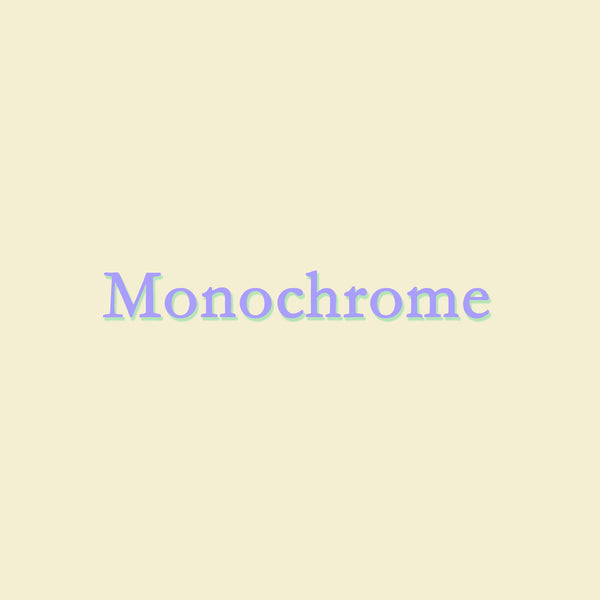
Monochrome
Background:
When it comes to art, different artists look at it in a different manner. Each artist has a unique way of representing his/her feelings or emotions. Some artists like to play with lot of colours, while some like to use only a single colour in a single painting. Such a painting, which uses a single colour or at most various shades of the same colour, is called Monochrome painting.

What is Monochrome?
The origin of the word ‘monochrome’ can be traced to Greek mythology. ‘Mono’ in Greek language means ‘single’ and word ‘chrome’ comes from element Chromium, which has its roots in the Greek word Khroma, meaning colour. So, Monochrome means single colour.
A monochromatic painting depicts limited colours or hues of the same colour. Images that use only different shades of grey (with or without black or white) are called Black & White or Grayscale. Paintings that use various tones of any other colour like green-and-white or green-and-red are also referred to as Monochrome.
Monochrome Art
Be it Monochrome photography or Monochrome painting, in broad terms, the terms monochrome art is applied to an art form that uses a single colour or tones of the same colour with different gradations. Monochromes are supposed to enunciate a pure form of painting for some, while for others it may be the end of painting. Some artists may befall on a spiritual dimension of art, relinquishing all material aspects. Monochrome in its sheer avant-gardism in defining what painting is and its function has been a consistent topic for critique among art historians and critics.
Origin of Monochrome Art:
The origin of monochrome panting can be traced back to the year 1882, when Paul Bilhaud displayed a black painting at the first Incoherent Arts exhibition in Paris. Though this was not the first time, when a painter created an all-black artwork. In the subsequent editions of the same exhibition, writer Alphonse Allais exhibited other monochrome paintings.
The famous French painter, Jean Metzinger believed that there will be a day when artists would take abstract art to its logical conclusion by vacating representational subject matter entirely and returning to a "completely white canvas". In some ways, one can see roots of minimalism during this period.
Popularity of Monochrome:
Though the world has moved on from monochrome to colour in terms of many mediums like Television, Movies and Photography. But, many painters still like and appreciate the depth of creativity that one can see in a Monochrome painting or photography. It is this wide range of possibilities (or impossibility) of interpretation of monochrome paintings, that makes the monochrome art intriguing and, at the same time, engaging to so many artists, critics, and writers. Which is way, despite not being dominant force and very few artists working on it, Monochrome is here to stay.
Conclusion:
The term Monochrome applies to art that is made using one single colour or tone with nuances and different gradations. Monochromes are supposed to enunciate a pure form of painting for some, while for others it may be the end of painting. Some artists may befall on a spiritual dimension of art, relinquishing all material aspects. Monochrome in its sheer avant-gardism in defining what painting is and its function has been a consistent topic for critique among art historians and critics.
